The Exhibition of Agricultural Natural Resources and Regional Planning (1980-1995) was held in June 1980. It shows the amount, distributional characteristics, and development and exploitation of agricultural natural resources in China, from the perspectives of natural conditions, agroclimatic resources, water resources, land resources, and biological resources. It introduces the achievements in agriculture regional planning and the unique man-made ecological system. The exhibition won the first prize of national regional planning achievements in December 1985.The exhibition consists of four parts:
Part One: Natural Conditions and Agricultural Natural Resources. This has four sections: 1. Climatic Resources. This section is about Chinese climatic regionalization; the amount and distributional regularities of light, heat, and water resources; and the occurrence and forecast of disastrous weathers. 2. Land Resources. It is about the amount, type, and characteristics, of Chinese land resources, and the achievements, problems and potentiality in developing and utilizing land resources. 3. Water Resources, which introduces the amount and distribution of Chinese surface waters, underground waters and glaciers. It also shows the successes, problems, and prospects, in exploiting water resources. 4. Biological Resources, including plants, forests, cultivated plants, wild animals, pests, animal husbandry, and aquatic products.
Part Two: Social and Economic Conditions in Agricultural Production. The exhibition reflects the social and economic conditions in Chinese agricultural production from the perspectives of land utilization, agricultural labor force, agricultural investments, technique equipments, science and technological power, and transportation condition.
Part Three: Agroecosystem.
Part Four: Agricultural Regional Planning. This part outlines the top ten agricultural divisions, and the regionalization distribution.
There are altogether more than 5,000 specimens in the exhibition, among which are forest samples of Pseudolarix amabilis, Taiwania cryptomerioides, China cypresses, Dovetrees, Eucommia ulmoides, and some other special arbor species in China, such as Metasequoia, gingkgo and Cathaya Argyrophylla Chun et Kuang. The exhibition presents the tallest tree in China-- Parashorea Chinensis, the heaviest tree -- black rosewood, the lightest - Paulownia, and a sample of 170-year-old camphorwood with a diameter of 2.64 meters. The cultivated plants include grains, cotton, oil, tea, sugar, vegetable, tobacco, fruits, medicine, and flowers. Animal samples include ordinary wild animals, together with some precious animal samples of pandas, Golden Monkeys, Takin, Sika Deer, and Red-Crowned Cranes, together with some other specimens of livestock and poultry.
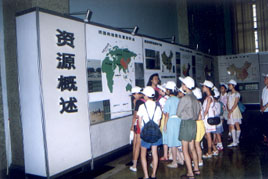
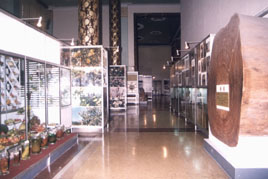
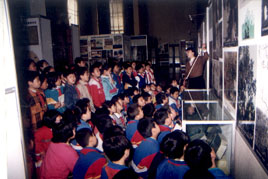
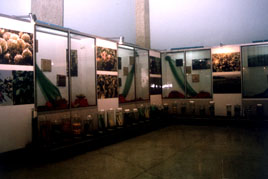
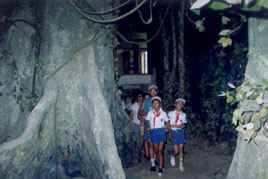
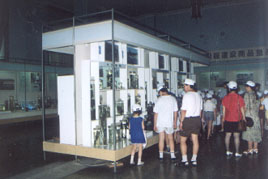













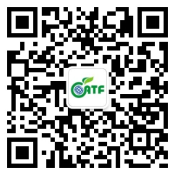


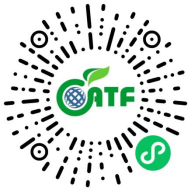



 Index
Index 